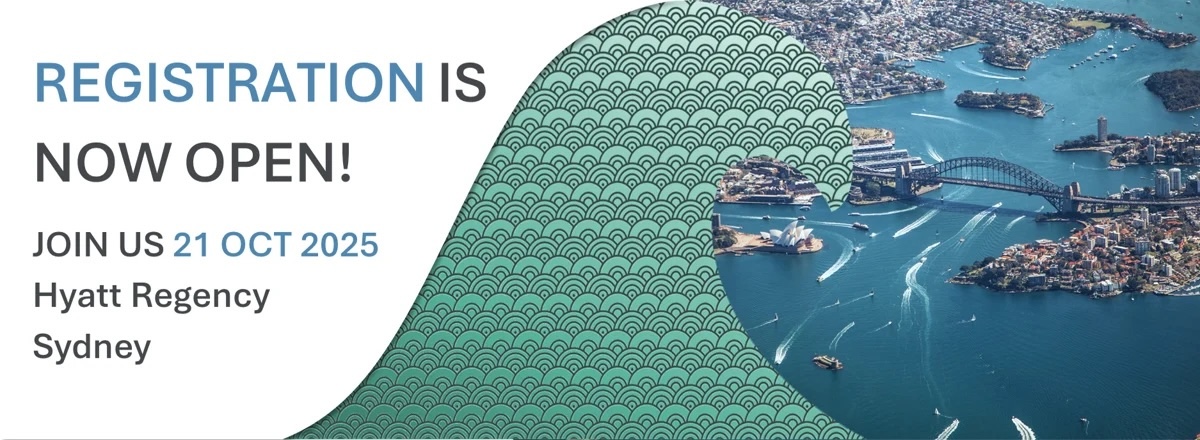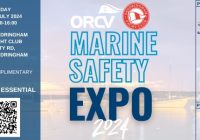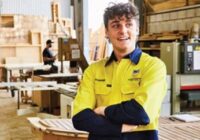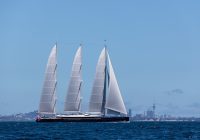Championing Change in Maritime Sustainability.
Australia’s maritime industry is at a turning point, with increasing pressure to adapt to global climate realities while maintaining competitiveness and capability. One of the most significant responses to this challenge has come from the Maritime Emissions Reduction Coalition (MERC)—a growing collaborative initiative driven by industry, academia, and innovation leaders. At the helm of this effort is Angus McDonald, CEO of Maritime Impulse, and a key figure in founding MERC.
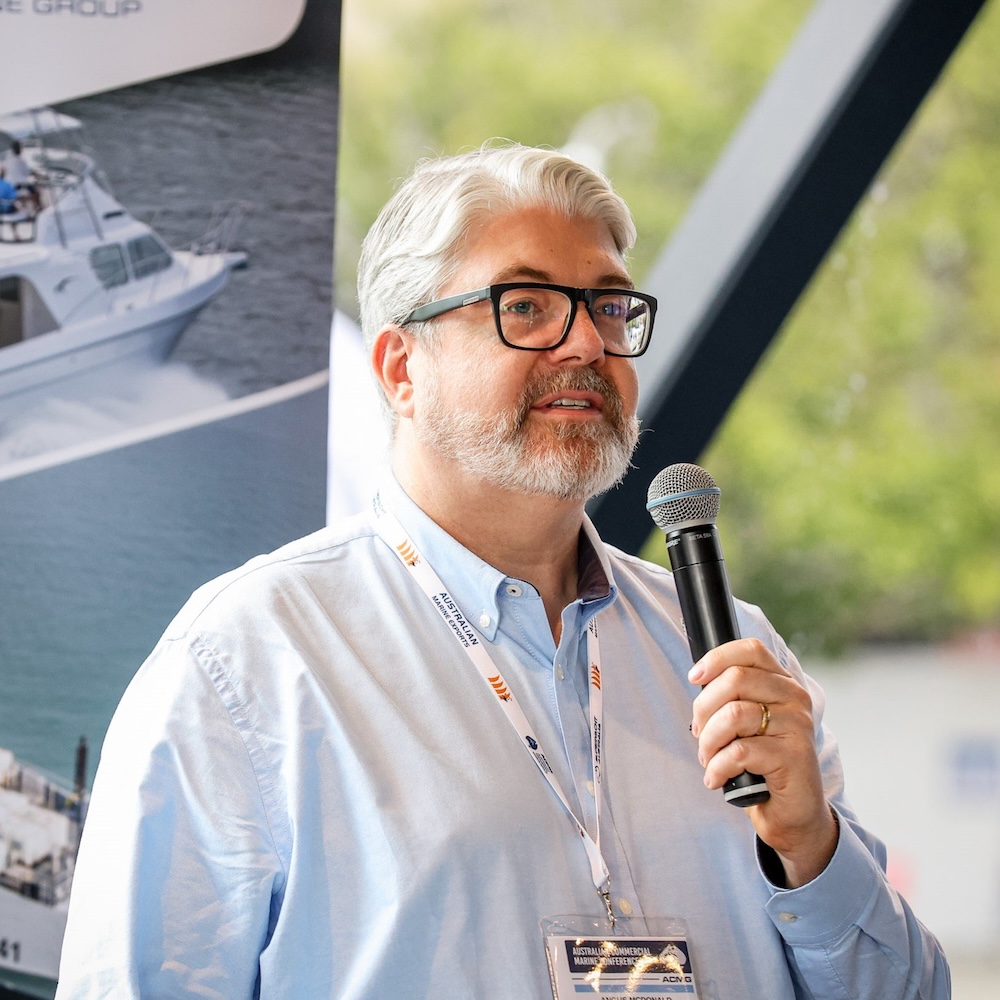
MERC aims to accelerate the decarbonisation of Australia’s maritime sector by promoting pragmatic, collaborative solutions. With a focus on uniting stakeholders across industry, government, and research, it provides a critical platform for shared innovation, scalable implementation, and actionable impact.
As MERC prepares to host its inaugural Discover Maritime Innovations conference in Sydney on 21 October, we spoke with Angus McDonald to learn more about his background, the origins of MERC, and what lies ahead for this bold and necessary initiative.
Angus, can you tell us a bit about your background and what led you to focus on maritime sustainability?
I’ve always been a sailor, from when my Dad got his first Beneteau in the UK to doing the Sydney Hobart Race when I was 16 (before the minimum age was increased to 18). So, I love boats and the ocean.
Most of my professional career has been in software development, product strategy, agile coaching, and innovation management.
Most recently I’ve consulted with Blue-X in the fishing sector for projects with the Fisheries Research Development Corporation (FRDC), Pacific Islands Forum Fisheries Agency (FFA), and Seafood Industry Australia (SIA). The exciting part is bringing my passion for the ocean to the work I do.
What inspired the creation of the Maritime Emissions Reduction Coalition (MERC)?
I spent about a year co-authoring a report with Blue-X for the SIA and FRDC on helping commercial fishers handle climate change. That convinced me of a few things, firstly that climate action was needed, and secondly that decarbonising the maritime industry was both more possible and more imminent than many in the industry realised.
How does MERC relate to Maritime Impulse? Are they structurally or operationally linked?
MERC is an innovation cluster in the spirit of the great maritime clusters in Europe, such as Maritime CleanTech and the Iceland Ocean Cluster. Any cluster needs someone to help kick it off and facilitate the work, as initiator or orchestrator, Maritime Impulse plays that role for MERC.
From a legal perspective, Maritime Emissions Reduction Coalition is a business name of Maritime Impulse Pty Ltd.
We have an elected Steering Committee, which this year, included Brendan Cooley, Managing Director of International Maritime Services (IMS), Lynelle Johnson, Managing Director of Eclass Outboards and Steve Mitchell, Marine Manager for Ampcontrol, as well as myself as Chair and my co-founder, Christine McDonald.
When was MERC officially formed, and what have been some of its early milestones?
MERC was launched in February 2024 and since then has grown to 33 participants from Australia and New Zealand and is continually growing.
Some of our work to-date has been focused on advocacy, and we have responded to nine different government consultations around the Maritime Emissions Reduction National Action Plan, the Transport & Infrastructure Net Zero Roadmap, the Sustainable Ocean Plan, Low Carbon Liquid Fuels Future Made in Australia, and NSW Innovation Blueprint.
We currently run five working groups, the latest is exploring Vessel-to-Grid in an Australian context. One of them was around the National Standard for Commercial Vessels (NSCV) and three MERC participants now have representatives on AMSA technical advisory panels.
We have also helped MERC participants explore type classification for marine battery systems, supported grant applications, fostered collaboration between participants and introduced innovative research to the MERC Community.
In March we ran Discover Maritime Futures, which was part of the Everything Electric Show at the Sydney Showground. That was our first big public event, and it served to demonstrate that there is a desire to know more about maritime decarbonisation, especially practical ways that organisations are already making progress. It also gave our members a valuable opportunity to introduce people already electrifying their lifestyles to the possibilities of electric boats, outboards, and water toys.
What is the core mission of Maritime Impulse, and how does it differ from the work being done through MERC?
Outside of our MERC work, Maritime Impulse is a service provider for startups and maritime innovators and a sales agent for Cetasol’s digital twin efficiency solution. We are certified as a Social Enterprise by Social Traders, which means that we have committed to returning at least half of our profits to fund the purpose of accelerating maritime emissions reduction. Since starting MERC we have found that administering the cluster has become the primary focus of our work.
Is MERC set up as a standalone not-for-profit organisation, or is it an initiative within Maritime Impulse?
MERC is an initiative of Maritime Impulse.
What does MERC offer its members in terms of practical value and impact?
MERC has four key roles in the MERC Community; Members, who stand to gain the most from maritime decarbonisation, Partners, who are interested in supporting maritime decarbonisation, Collaborators, who want to work with MERC, but don’t fit the other roles, and Supporters, who are financial supporters of our work, but are otherwise not involved in the MERC Community.
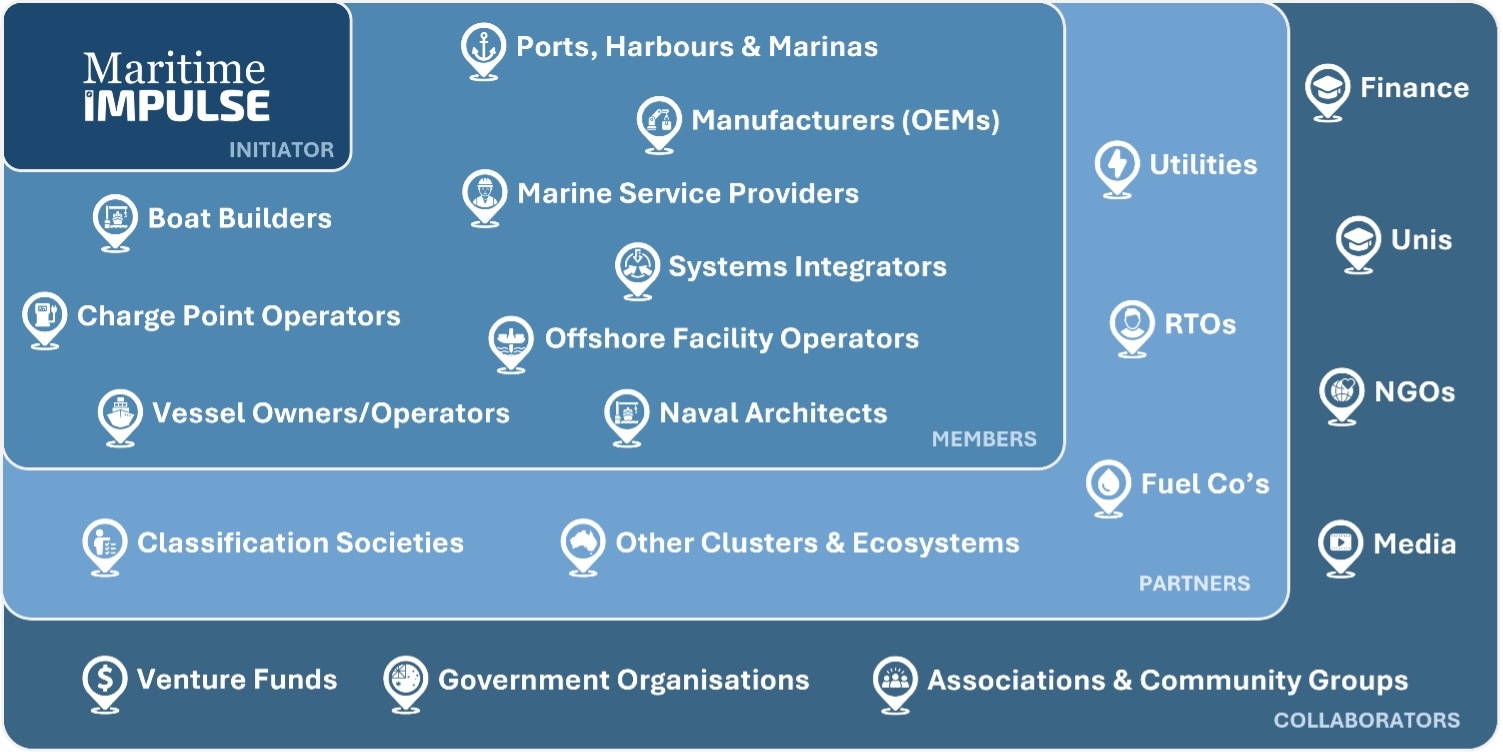
Types of participants in MERC (excluding Supporters)
Most MERC Members are either vessel or maritime facility operators, boat/ship builders, or involved in the maritime supply chain. What we offer MERC Members is involvement in our working groups, and programs, promotion to customers, help finding and introductions to funding opportunities, priority access to MERC events, and much greater collaboration opportunities. Gathering the people who are most invested into maritime decarbonisation serves a purpose by itself, it means you can find a willing ear, a friendly shoulder to lean on, and find encouragement from others’ wins.
Who is MERC designed for—what kind of organisations or individuals should consider joining?
Key to who should consider MERC are two questions; the first is whether your organisation is committed to climate action? The second is whether you are willing to consider new ideas, new technologies, new ways of doing things in order to take climate action?
At heart we are an innovation cluster, and a willingness to commit time and effort is important to see results from becoming part of the MERC Community.
You’ve got MERC’s inaugural event, the Discover Maritime Innovations Conference, coming up in Sydney on 21 October. What can attendees expect?
Discover Maritime Innovations is going to focus on two main challenges for the maritime sector. Firstly, decarbonisation, mitigating the impacts of our own operations on the climate. Secondly, we’re looking at how the maritime sector will need to adapt to the changes climate change is bringing – primarily sea level rise, and dangerous wet bulb temperatures, but also wilder storms, more acidic oceans, and the social impacts of all of these.
Within the bounds of those challenges, we want to bring the people who work in the maritime sector and know it best, let’s call them operators (although some are boat builders or suppliers), with the people who might have the sorts of innovative ideas that can help address these challenges, let’s call them innovators.
Attendees are going to hear from passionate advocates for decarbonisation and knowledgeable leaders in climate change adaptation on land and sea. Many innovators won’t have considered how they can help the maritime sector – we’ve seen how some of the most innovative companies in the MERC Community didn’t start in the maritime sector, but in mining, or aviation, or other areas, but then found they had a product or service that was ideal for addressing these maritime climate challenges.
For people in the maritime sector, it’s a chance to hear from panels of their peers where the organisations represented have serious aspirations for climate action but are happy to share their learnings about what works and what doesn’t. It’s also a chance to learn about some great innovations and meet people whose ideas might just transform your industry.
The scale is impressive—280 attendees, eight sector panels, over 36 speakers. Can you share some highlights or key themes from the program?
Squeezing everything into one day is a challenge, we might need to expand over a couple of days next year!
We have panels of experts broadly divided into eight different maritime sub-sectors. For the sake of time, we are running four in parallel at a time, in two sessions, so attendees get to select two panels to attend. Those eight sub-sectors are:
- Marine Tourism
- Ports & Supporting Services
- Defence (Navy/Army)
- Offshore Wind & Marine Construction
- Marinas & Boating Infrastructure
- Water-Based Transport
- Commercial Fishing & Aquaculture
- Ship/Boat Building & Repair
We’ve already announced the speakers for some of the panels, including ‘Water-Based Transport’, ‘Marine Tourism’ and ‘Commercial Fishing & Aquaculture’.
We have many speakers confirmed and invitations awaiting confirmations and plan to announce more panels in the coming weeks.
The other side of the conference to share and highlight the innovations we’re introducing to the industry. We have an open call for speakers, but plan on having eight innovation talks, perhaps one or two more if we get some exceptional proposals. Right now, there are seven innovation talks we have accepted:
- “Increasing Fuel Efficiency of Maritime Transport with Underwater Robotics” from Hullbot,
- “Implementing Auckland’s Electric Ferry Network” from NetZero Maritime NZ, and
- “Cutting Emissions on Hydrographic Survey by 80%” from Greenroom Robotics.
- “Enabling Marine Electrification Through Practical Innovation” from Naut.
- “Electrifying the Maritime Energy Ecosystem” from Ampcontrol.
- “Building the Maritime World with Large Format 3D Printing” from Hyperion Systems.
- “Efficient Voyage Optimisation and Emissions Reduction” from Tidetech.
Some of the other innovation talks that are in the pipeline look to be very interesting, with everything from new materials and construction techniques to the benefits of AI, automation, and robotics.
Why is now the right time to bring the industry together for this kind of conference?
We are seeing climate action being mandated across multiple levels, from shipping regulation by the IMO, through the upcoming Maritime Emissions Reduction National Action Plan (MERNAP), and even local governments that are leading the way in Europe and North America.
The impacts of climate change are no longer debatable, and the recent Federal election in Australia has given the Labor government an opportunity to make serious changes to the maritime sector’s status quo.
But the reality is that there are also some serious benefits to decarbonisation, especially in embracing electrification. What many MERC Members have seen is that they can deliver quieter, cleaner and better operating vessels with pragmatic, commercially sensible project costs. That’s the incentive, and part of what makes this such an exciting change.
How do you hope this event will accelerate real emissions reduction across the maritime industry?
We envisage seeing people across the industry thinking more boldly about what change will mean. It isn’t all doom and gloom, but it will be a future that requires action now to be prepared for. I also hope it helps governments realise that change is possible in the maritime sector – there is too much acceptance of excuses about being a hard to abate sector. The reality is that other countries are already pushing ahead and reaping the rewards for changing early. Australia has a proud maritime heritage, great renewable energy potential, and vulnerability to oil supply shocks, so we should also embrace this transition.
The values of MERC highlight collaboration, stewardship, and pragmatism. How do these shape your strategy and partnerships?
Collaboration is important because we are attempting to create systemic change, it’s not as simple as buying your fuel from a different supplier, it requires changes across every aspect of your business, your suppliers’ business, and even government regulations. Working together helps us address these challenges with a broader perspective and gives us more leverage to implement change.
Stewardship is fundamental to our view of climate action. We don’t take climate action because the government requires it, or because it makes us look good to customers, but because we want to be good stewards of the human, financial, environmental, and social resources under our control and influence. That means recognising when externalities like greenhouse gases have been identified that we need to acknowledge our role in creating them, and act to reduce our impact.
Pragmatism is something we embrace because we’re working in the commercial maritime sector, and solutions that aren’t pragmatic won’t be accepted. We accept that some solutions are imperfect, but get us results earlier, and some solutions seem perfect but are not worth wasting time on because they can’t be pragmatically implemented.
What role do you see Australia playing in global maritime emissions reduction through initiatives like MERC?
Our ambition with MERC is to see Australia have a regional impact beyond our own commercial vessels.
It’s hard for Australia to do much with international shipping, although MERC Members like Tidetech are having an outsized impact there too. But we don’t build the largest ships, or own them, or operate them, or have them flagged in Australia. So, we focus on vessels that get operated and built in Australia like fast ferries, marine tourism boats, offshore vessels, fishing vessels, transhipment barges, workboats, and pilot boats, etc.
Within that commercial fleet we already export many of them and we know that innovations we create here can impact the world. Our goal is to bring together companies across the Asia Pacific and Oceania regions to drive faster change than would have happened without us being involved.
What does success look like for MERC in the next 2–3 years?
Our success is defined by three key metrics.
Firstly, by the emissions reduction that happens within our participants. We ask MERC Members who mainly operate vessels or maritime facilities to report their Scope 1, 2 and 3 emissions to us, which we plan to analyse, aggregate and report on anonymously.
Secondly, the amount and quality of collaborations between our participants. Some of that relates to working groups, and online forums, but the most tangible evidence is the projects that participants are working on together.
Finally, the influence that MERC has on the maritime industry as a whole. That is measured by the number and diversity of participants in MERC, the impact we have on regulations and standards, and the success of events like Discover Maritime Innovations.
Are you supported or linked to any of the Marine industry Associations within Australia?
Maritime Impulse is an Australian Commercial Marine Group (ACMG) member, and we encourage our participants to engage with whatever industry association makes the most sense for them. Some are in AIMEX, others in MIAL, PA, MIA, or BIA – and others can’t afford to be in an industry association.
We’ve found all the industry associations have some degree of focus on decarbonisation – but their impact is limited to their own members, and the systems we need to change cut across those industry lines.
MERC can’t cover the range of issues that the industry associations offer to handle. Where we can help is by bringing people together across industries, customers with service providers, inventors with distributors, manufacturers with suppliers, vessel operators with ports, energy providers and energy consumers, to ensure we act together to drive change.






